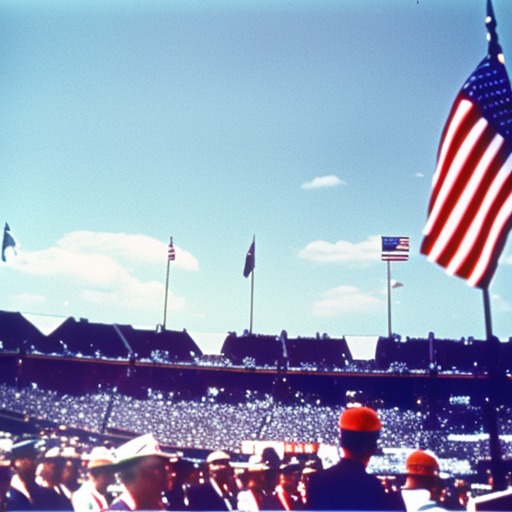Summary:
The 1968 Democratic National Convention was a pivotal event in American history, marked by protests, violence, and political turmoil. Held in Chicago, the convention was intended to nominate the Democratic Party’s candidate for the upcoming presidential election. However, it quickly descended into chaos as anti-war demonstrators clashed with police, leading to a widespread sense of unrest and division within the party.
Background:
The 1968 Democratic National Convention took place against the backdrop of a deeply divided nation. The Vietnam War had sparked widespread opposition, and civil rights activists were demanding an end to racial discrimination. The Democratic Party itself was divided over these issues, with some members supporting a continuation of President Lyndon B. Johnson’s policies, while others called for a more progressive agenda.
Protests and Violence:
Thousands of anti-war protesters descended upon Chicago to voice their opposition to the war and the Democratic Party’s perceived failure to address their concerns. The city’s mayor, Richard J. Daley, responded by deploying a large number of police officers and National Guard troops to maintain order. Tensions quickly escalated, and clashes between protesters and law enforcement became increasingly violent.
The Chicago Eight:
Eight prominent anti-war activists, including Abbie Hoffman and Jerry Rubin, were charged with conspiracy and inciting a riot as a result of their involvement in the protests. The trial, known as the Chicago Eight trial, became a symbol of the growing divide between the government and the counterculture movement. The defendants used the trial as a platform to criticize the war and the political establishment.
Party Divisions:
The convention itself was marked by deep divisions within the Democratic Party. Supporters of Vice President Hubert Humphrey, who was seen as the establishment candidate, clashed with supporters of Senator Eugene McCarthy, who had run on an anti-war platform. Many McCarthy supporters felt that the party’s nomination process was rigged in favor of Humphrey, leading to further unrest and protests.
The Nomination:
Despite the turmoil, Vice President Hubert Humphrey secured the Democratic Party’s nomination for president. However, the convention had exposed deep rifts within the party, and many anti-war activists and young voters felt alienated by the Democratic establishment. This division would have a lasting impact on the party and the broader political landscape.
Legacy:
The 1968 Democratic National Convention is remembered as a turning point in American politics. It highlighted the deep divisions within the country over issues such as the Vietnam War and civil rights. The violent clashes between protesters and police also raised questions about the limits of free speech and the role of law enforcement in maintaining order. The convention and its aftermath contributed to a sense of disillusionment and mistrust in the political system, which would shape the political landscape for years to come.












